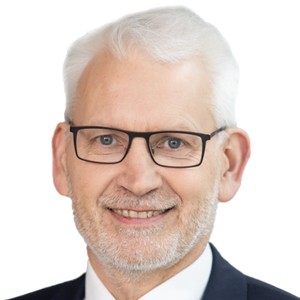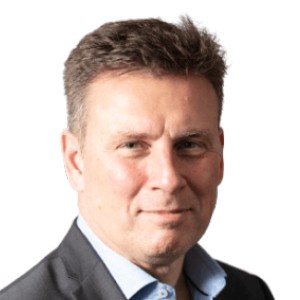Effective leadership requires strong communication, resilience, an unwavering commitment to continuous learning and adaptability. Speak to most CEOs and senior executives and they’ll acknowledge that things are tough and, while we may be at a point where debt is more freely available and the public markets are experiencing a rebound, there remains a sense that the situation can change very quickly.
We’ve selected four of our most-read articles on leadership over the last year for you to enjoy, covering areas such as crisis management, career transition, technology and the dark art of managing different stakeholders.
Leading Through a Crisis as a First-Time CEO
“It’s a category change, not just an intensity change,” observes
Michael Lewis, describing the considerable shift in scope and responsibility when transitioning from a divisional leadership role to the Group CEO position.
In 2023, Michael took on the role of Group CEO at Uniper, an international energy company which has its headquarters in Germany. The business was at a critical turning point as the energy crisis, precipitated by the war in Ukraine, resulted in substantial financial losses for the business and necessitated intervention by the German government due to its heavy reliance on Russian gas imports.
As a first-time Group CEO, Michael faced the complex dual challenge of stabilising the company's financial position while simultaneously charting a strategic new direction. “The core mission is to transform ourselves into a flexible, green power and gas provider,” he says.
Michael gives a candid reflection on leading through crisis, while simultaneously laying the groundwork for building a more resilient organisation.
Harnessing Culture in a Tech Powerhouse
At the heart of Lenovo’s rise as a global tech giant lies a culture-driven people strategy shaped by Senior Vice President and CHRO
Gao Lan. She discusses how Lenovo has intentionally aligned its HR function with business transformation, blending global execution with local nuance across 180 markets and over 70,000 employees.
Gao shares how the company’s cultural framework anchors leadership behaviours, accountability and innovation, all the while supporting fast-paced performance. “A high-performing HR function is deeply integrated with the business, not just as a partner but as a co-driver of the company’s strategy and results,” she explains.
The Journey from CFO to Chair
Moving from executive leadership into a Chair role requires a distinct mindset—one that shifts from operational control to orchestration, and from driving decisions to enabling them.
Alan Bannatyne shares his experience of this transition as he went from being CFO of Robert Walters Group to Chair of XPS Pensions Group.
He discusses how his CFO experience provided a strong foundation, but not a full preview of the role’s subtleties—from managing shareholder dynamics to creating space for challenge and meaningful debate in the Boardroom. “You realise very quickly there are things that you don’t know and you haven’t done before, and you have to learn fast,” says Alan.
He emphasises the importance of trust, constructive challenge and keeping discussions focused on execution and outcomes. As he puts it: “Ultimately, the better the people around the Board, the better the performance. It’s not a role for a perfectionist, but it’s meaningful and highly rewarding – and full of interesting challenges.”
For executives considering a future in non-executive leadership Alan offers a grounded and practical perspective of the realities and rewards of Chairing a Plc Board, and what it takes to lead from the top.
Read the full article here
Leading a Private Equity Exit
Since founding Anthesis Group in 2013, CEO
Stuart McLachlan has led the sustainability consultancy through a decade of growth, driven by purpose and a bold M&A strategy. Having completed more than 20 acquisitions,
Stuart reflects on building value at scale and how that journey culminated in a strategic investment by Carlyle Group.
On choosing the right investor to support the next phase, he says: “We needed a global partner that could really help us to professionalise, to scale up and that had access to the capital that we needed.” He also discusses how leadership capability evolved in tandem with strategic clarity so as to build the foundations for long-term growth.



